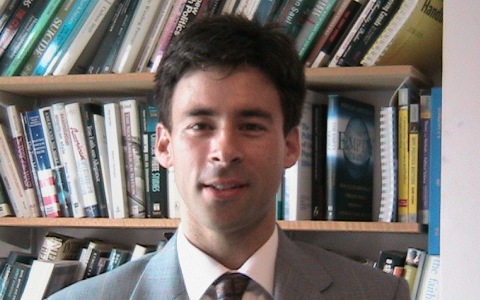CENSUS ANALYSIS: Busy believers belie the statistics of doom
by - 28th December 2012
 On the morning of 11 December the eagerly anticipated religion data for the 2011 UK Census was released.
On the morning of 11 December the eagerly anticipated religion data for the 2011 UK Census was released.
Two things were immediately seized upon by the internet, print and TV media: firstly, the number of atheists had increased by 10 per cent since 2001 (15 – 25 per cent). Secondly, the number of Muslims had jumped from 1.5 million in 2001, to 2.7 million (4.8 per cent of the total population).
Both facts had been anticipated. Numbers of traditional believers in the UK generally had been known to be declining; the only question would be by how much. The 13 per cent decline in Christianity that the Census reported was significant, but was broadly in line with the findings of the Parliamentary Research Group paper on religion published in 2011. That had concluded that Christianity was declining in the UK at the rate of approximately 1.5 per cent per year. Given that some commentators had been tweeting before the release that Christianity was down to below 50 per cent, the fact that it was showing significantly above the 50 per cent mark at 59.3 per cent raised a few eyebrows. Nevertheless, for those concerned about ‘defending the faith’, these make for troubling statistics.
On the other hand, the British Humanist Society’s Chief Executive Andrew Copson couldn’t hide his obvious elation as he commented on the BHA website that the Census data evidenced ‘a really significant cultural shift…’. He went on to extrapolate that since ‘Religious practice, identity, belonging and belief are all in decline in this country, and non-religious identities are on the rise it is time that public policy caught up with this mass turning away from religious identities and stopped privileging religious bodies with ever increasing numbers of state-funded religious schools and other faith-based initiatives.’ Copson concluded that religious institutions were ‘ . . . decreasingly relevant to British life and identity…’
Muslims
Others however were keen to focus on the exponential rise in Muslim numbers. Peter Hitchens in his online Daily Mail column on the 15th reflected morosely that the Census data had revealed ‘not just a description of the state of things on a day in 2011. . .’, but rather ‘. . . a prophetic document telling us where we are going, whether we like it or not.’
Unsurprisingly, Muslims were very pleased with the census data. In his Huffington Post column on 11December, the former Secretary General of the Muslim Council of Britain, Muhammad Abdul Bari sought to highlight the growth of the Muslim population whilst at the same time seeking to reassure the broader population of the UK that despite the rapid growth in the number of Muslims over the previous decade, this should not be a cause for concern amongst the wider British public. He went on to add that Islamophobia was on the increase across the UK, pointing particularly at the inception and development of the English Defence League since 2009.
London
 What all three of these commentators had failed to acknowledge was that the Census had shown that Christianity was on the increase in London. In and of itself one might argue that this was a small anomaly in the overall picture. Nine London boroughs show increases in Christianity. Eric Kaufmann, political scientist at the University of London, in a blog for Demos entitled ‘London: a rising island of religion in a secular sea’, explores the statistics very helpfully showing that the religious population of the UK is being replaced by religious immigrants.
What all three of these commentators had failed to acknowledge was that the Census had shown that Christianity was on the increase in London. In and of itself one might argue that this was a small anomaly in the overall picture. Nine London boroughs show increases in Christianity. Eric Kaufmann, political scientist at the University of London, in a blog for Demos entitled ‘London: a rising island of religion in a secular sea’, explores the statistics very helpfully showing that the religious population of the UK is being replaced by religious immigrants.
He writes: ‘The proportion of white British in the capital declined from 58 to 45 percent of London's population in ten years, twice the fall recorded in England as a whole. But hold on: the number of Christians nosedived by 3.8 million in England but fell a mere 220,000 in London.
‘In nine London boroughs, the number of Christians actually increased, with Hackney and Newham topping the list. Now let's add non-Christians to the picture. The number of religious people of all faiths aggregated in England declined by over 2 million in the past decade but grew by 440,000 in London. In seven London boroughs, reverse secularisation took place. In Redbridge and Newham, the share of non-religious people in the population was cut in half!’
Adds Kaufmann: ‘This has ramifications for the religious geography of England. London, especially ethnically diverse boroughs like Newham and Redbridge, is where the faithful of England are congregating. Demography, in the form of immigration, religious fertility and a young age structure, is driving the shift. Several years ago, a study discovered that 60 percent of parishioners in London churches were non-white. Few were white British.’
One might be led by this to expect a rapid Islamization of the UK through immigration and childbirth in the next few decades since the rise in Christians is somewhat dwarfed by the leap taken by Muslim numbers. However, there is some reason to believe that Muslim numbers will actually fall and the Muslim baby-bulge that researchers have noted in the past may have peaked.
This is a conclusion reached by the Pew Research Centre: their 2011 Report Future of the Global Muslim Population showed a declining rate of increase for Europe over the next 20 years for several reasons, the key being the changing expectations of Muslim women, many of whom have achieved excellent educational qualifications over the last two decades and are now demanding the careers to match them and in so doing, eschewing traditional family roles. So if Kaufmann is right and the rest of the UK follows the London direction, perhaps it will not simply be a Muslim rise, but a re-emergence of Christianity as well.
Media
In this atmosphere of media crystal-ball gazing about the future religious shape of the country it is fascinating that the Henry Jackson Society has just released a report on how the media are reporting faith in the UK.
Entitled Faith in the Public Sphere – a Study into Media Reporting of Faith-Based Claims it was released on 17December. It was largely based on data extrapolated from religion coverage of three newspapers over the last decade: the Daily Telegraph, the Daily Mail and the Guardian.
The report contains some data that could be readily surmised: the Daily Mail is the most frequent reporter of religious issues, the Guardian the least amongst the three papers. The researchers identified what the report calls ‘religious claims’, interventions by religious groups or actors of whatever kind that have been either targeted at, or picked up by, reporters. Of most interest was the report’s finding that the Muslim Council of Britain had made the most ‘claims’, even beating the Archbishop of Canterbury (7.1 per cent to 6.8 per cent) and that two-thirds of Muslim claims had come in the period 2004-2007, around the time of the 7/7 bombings.
Given that fact, one would have expected to see terrorism and security issues high on the list of topics covered, however it was seventh on a list of ten in which ‘Public Life’ was the most frequently engaged with (17.5 per cent). This was due to the fact that the significant majority – 67 per cent - of claims had come from Christians. The work of the MCB and others in relation to the 7/7 bombings was diluted over the course of the decade with a steady stream of Christian comment on a range of public concerns. This is important and shall be returned to in a moment because it ties into the Census data.
The key observation from the HJS report was that, although the census revealed an increasingly secular population, the number of media reports concerning the views of religious people actually increased over the same ten-year period. Thus, whilst there were repeated claims from faith groups that faith, particularly Christianity, was being increasingly marginalized, the figures in the report suggest that faith spokespeople were actually having a disproportionately high impact on the public square on a whole range of issues.
Clearly the implicit question in the HJS report concerned why an apparently less and less relevant section of society was being asked for its opinion by the media!
Perhaps the HJS have inadvertently stumbled upon a deeper truth in modern British society: that in a culture of cynicism and lack of engagement in political life across wider British society, Christians are taking their citizenship seriously by contributing to the public debates that are its lifeblood.
On the evidence gleaned from the Census and the HJS report taken together, if we want a healthier public square, perhaps we had all better hope that Christian numbers follow in London’s footsteps.
- Log in to post comments
